
Each year at Jisc we run a leadership survey, which is sent to leaders in HE and FE, with responses from vice-chancellors and principals, technology and library strategic leaders and more. The latest was sent during the spring of this year.
The survey asks several questions about the perception of Jisc and our services, the challenges our members face, and, this year, dived into AI in more detail.
We received responses from over 600 people from 134 HE institutions and 258 FE institutions, so it gives a great overview. In this post, we’ll look at the results around AI.
About the questions
For the challenges question, AI was included in the challenges institutions could select from as their most pressing challenges, picking up to five.
With our AI questions, we wanted to understand where institutions were with some of the key areas of our maturity model, and how they were using AI. The three questions we asked around this covered:
- What AI activities you have undertaken, with options from our AI readiness checklist.
- Whether you felt prepared on some key AI issues.
- How AI was being used in the institutions.
We get multiple responses per institution, so we took a ‘most optimistic answer’ approach for each answer, on the basis that if someone from the organisation knew an activity was happening it probably was.
The results
Challenges
Respondents could pick five top challenges from a list of common challenges, including topics such as cyber security, AI, staff retention, escalating costs etc. The results for AI were as follows:
Higher Education
AI was the second most frequently cited challenge (47%) over the next 12 months; up from 16th place (15%) in 2023 to 2nd in 2024. Cybersecurity was the most cited.
Further Education
AI is the top challenge over the next 12 months alongside cyber security (58%); up from 14th (13%) to joint 1st place with cyber security.
Activities
For the first AI-specific question, we wanted to see which of a set of key activities institutions had done. These were taken from our ‘Principles to Practice’ checklist, and cover initial actions around working groups, guidance and staff development.
The question was phrased as:
“With regards to Artificial Intelligence (AI), has your organisation done any of the following?”
Further Education Results
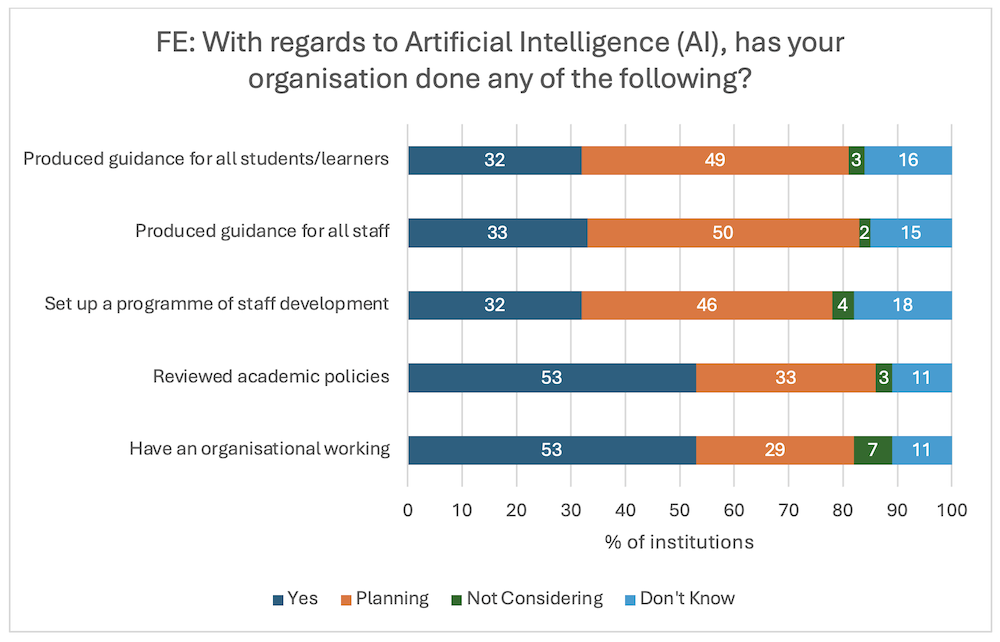
We noted that many colleges are still in the planning stage for guidance and staff development, and felt we could help with this, by producing example starter templates:
These are available on the blog, covering staff and learners.
We have also since launched a programme of training webinars to help with staff development, including making the resources available to members.
Higher Education Results

Overall, we felt the figures in higher education showed that Universities are well prepared, with most having completed the core activities, and moving to plan staff development. We felt this showed no specific support was needed on these tasks.
How Prepared?
We then asked:
“Is your organisation sufficiently prepared on the following issues related to AI?”
The main purpose of asking this was to help us consider where to focus our attention.
Further Education Results
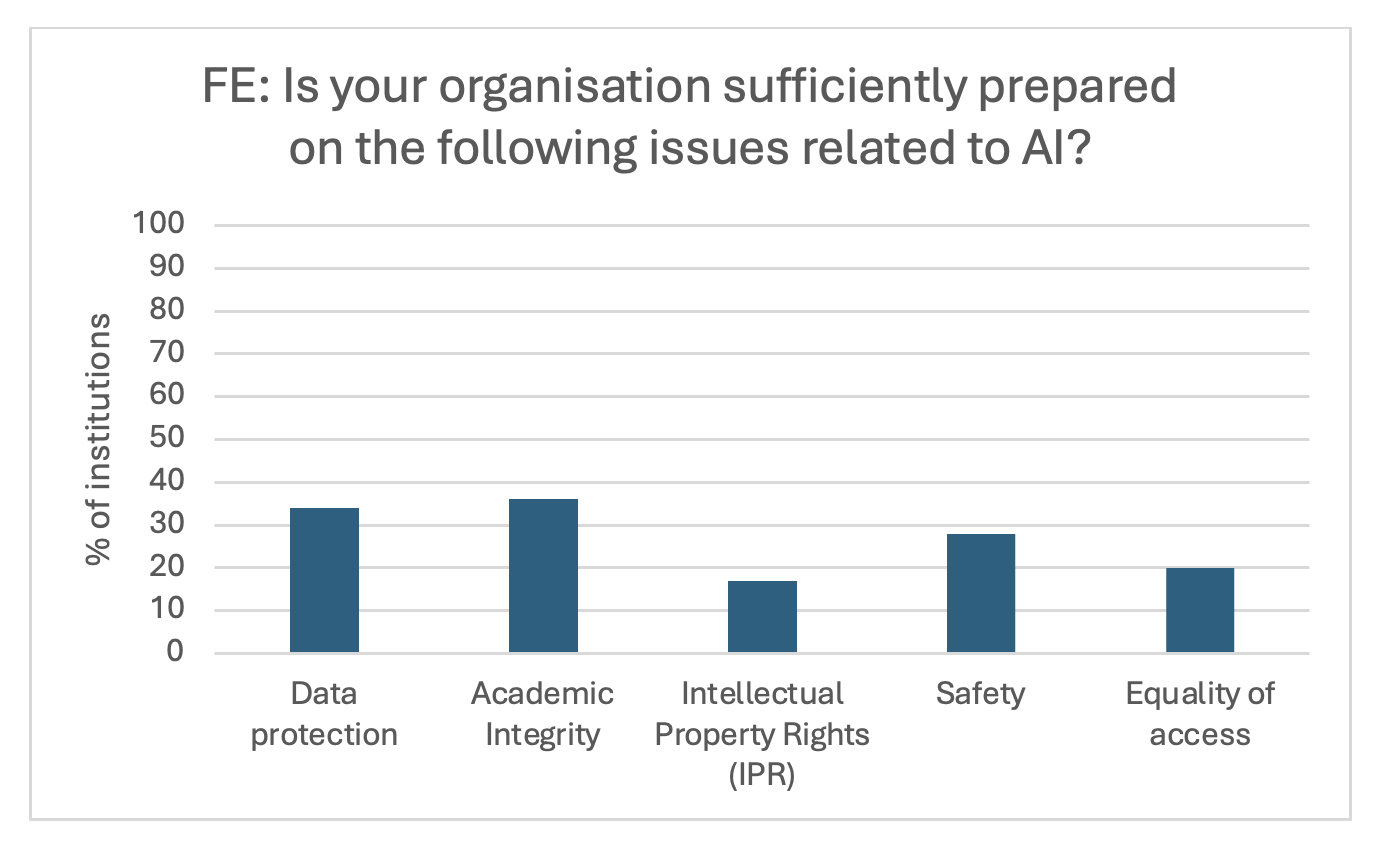
We note that the majority of colleges were feeling insufficiently prepared across the board, which is perhaps unsurprising given the pace of change, and as a result, our focus remains balanced.
Higher Education Results
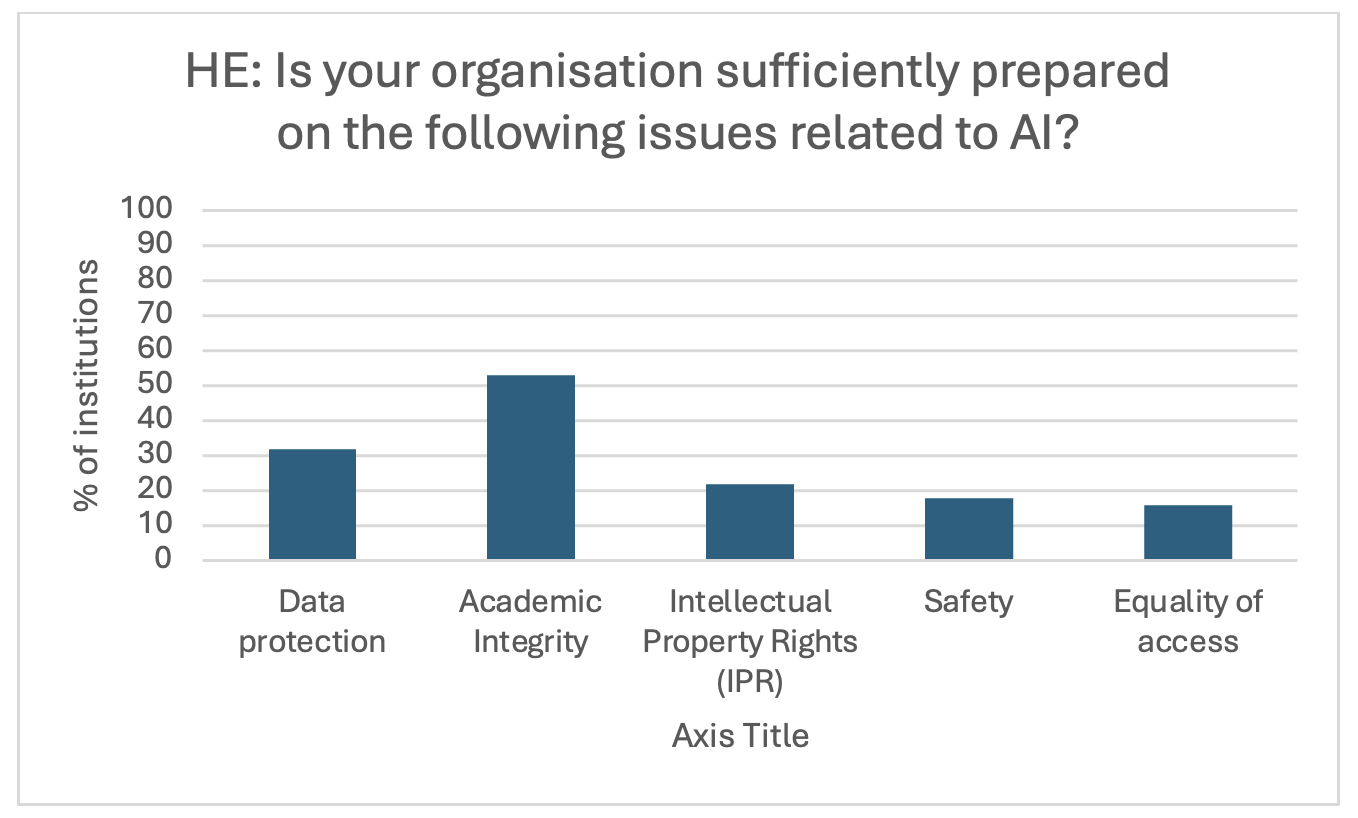
The results follow a similar pattern to FE, with stronger confidence around academic integrity.
Using AI
The final set of questions were to get a feel for where AI was being used in institutions. We know the areas we picked as options are very much open to interpretations, and the data wouldn’t be readily available, so the answer would be very much based on people’s view across the organisation. We still think it is useful though to get a broad picture.
“Are you using AI for the following in your organisation?”
Further Education Results
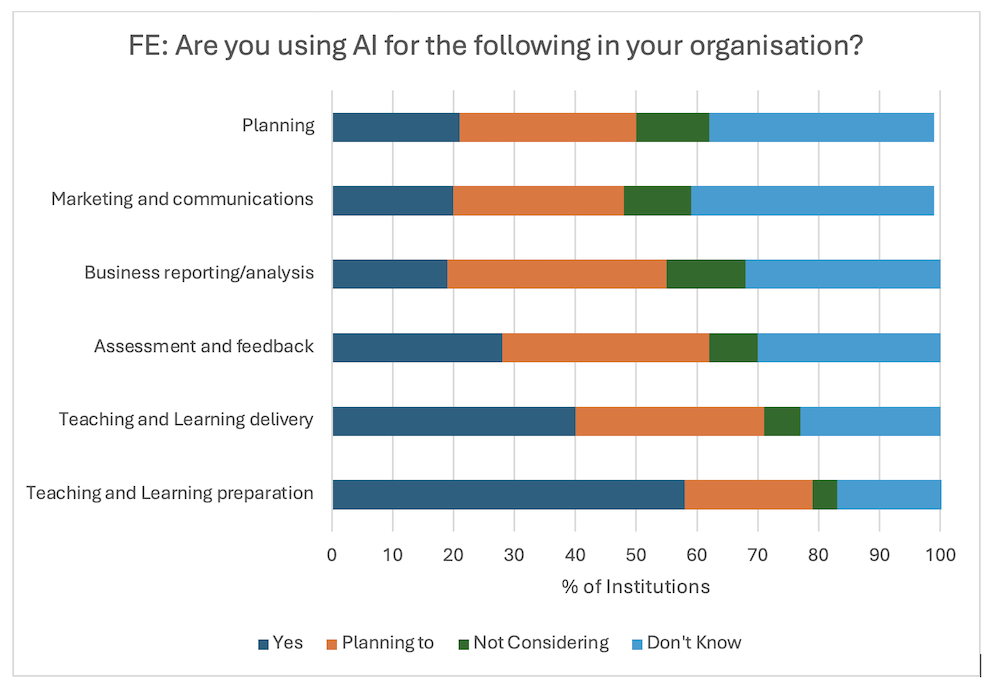
As mentioned above, the results are just to give a feel for the balance of activity and are open to a lot of interpretation. Still, we can see a lot of activity around learning and teaching preparation in our colleges, which matches what we see on the ground, and with the success of tools such as Teachermatic.
We expected a lot of ‘Don’t know’ here, and that’s what we got – we think there is probably a lot of activity happening at a smaller scale in departments which isn’t known across the institution.
Higher Education Results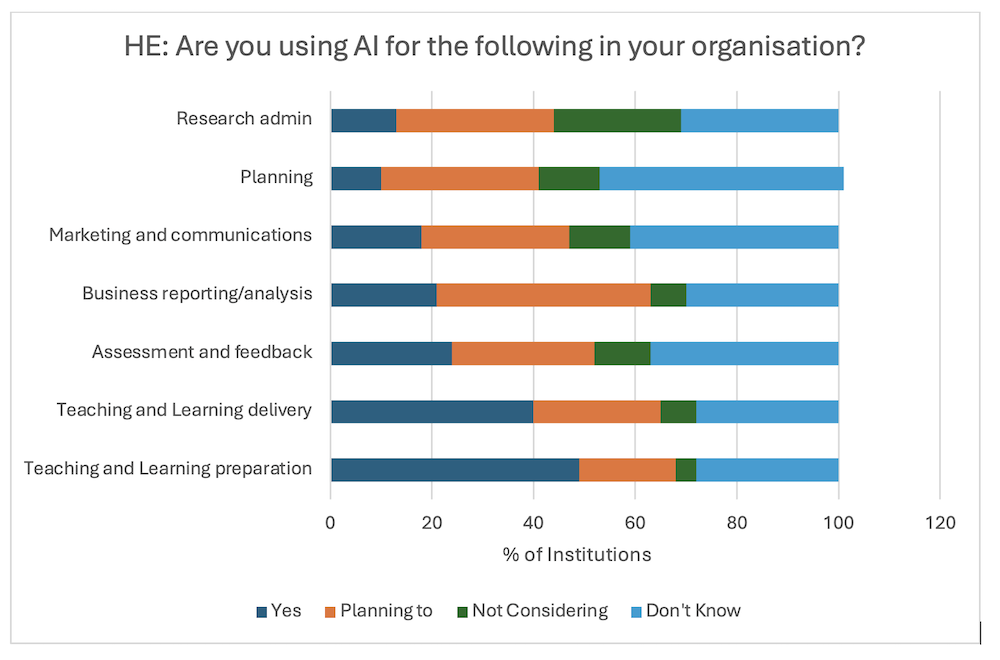
The higher education results follow a similar pattern to FE, with learning and teaching preparation being the most cited. and a similar expected pattern of ‘Don’t know‘.
Conclusions
The results very much match our expectations from discussions with members. A lot has happened to ensure institutions are meeting the challenges and opportunities of AI, with widespread working groups, advice and guidance to students and planning for training. The use of generative AI is spreading across the institution, particularly around learning and teaching.
Yet still, institutions don’t feel prepared. This isn’t surprising given the pace of change, and from our perspective, shows a continued need for us to expand our advice, guidance and training and to continue to bring the community together to work together on shared challenges.
Find out more by visiting our Artificial Intelligence page to view publications and resources, join us for events and discover what AI has to offer through our range of interactive online demos.
For regular updates from the team sign up to our mailing list.
Get in touch with the team directly at AI@jisc.ac.uk
